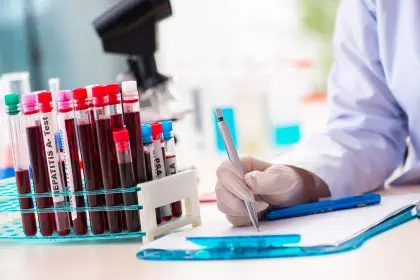The supplement industry has exploded into a multi-billion dollar market, with millions of Americans incorporating various pills, powders, and capsules into their daily routines. While many people view these products as natural pathways to better health, a growing body of medical research reveals that certain popular supplements can silently inflict serious damage on one of the body’s most crucial organs: the liver.
Unlike prescription medications, which undergo rigorous testing and monitoring, dietary supplements face minimal regulatory oversight before reaching store shelves. This regulatory gap has created a dangerous situation where products marketed as health enhancers can actually cause significant harm, particularly to liver function, often without users experiencing any immediate warning signs.
The liver serves as the body’s primary detoxification center, processing everything from medications to environmental toxins. When supplements introduce additional stress to this vital organ, the consequences can be severe and potentially irreversible. Many individuals unknowingly consume products that gradually compromise their liver health, making this a silent health crisis affecting countless households across the country.
First dangerous supplement: Kava kava
Kava kava, derived from the Pacific Island plant Piper methysticum, has gained tremendous popularity as a natural remedy for anxiety and stress relief. 1. This supplement is widely available in health food stores and online platforms, marketed as a safe alternative to prescription anti-anxiety medications.
The active compounds in kava, known as kavalactones, can cause severe liver toxicity through multiple mechanisms. These substances interfere with the liver’s ability to process other compounds, leading to a dangerous buildup of toxic metabolites. The hepatotoxic effects can manifest as acute liver injury, chronic liver disease, or even complete liver failure requiring transplantation.
What makes kava particularly dangerous is its delayed onset of symptoms. Users often consume this supplement for weeks or months before experiencing any noticeable effects. By the time symptoms appear, including fatigue, nausea, and jaundice, significant liver damage may have already occurred. The supplement’s popularity in wellness circles has created widespread exposure to these risks, affecting thousands of unsuspecting consumers.
The liver damage from kava appears to be idiosyncratic, meaning it doesn’t affect everyone who uses it, but when it does occur, the consequences can be catastrophic. Some individuals develop severe hepatotoxicity even with short-term use at recommended doses, making it impossible to predict who will experience adverse effects.
Second harmful supplement: Green tea extract
Green tea extract represents one of the most surprising entries on this list, given green tea’s reputation as a health-promoting beverage. 2. The concentrated extracts found in supplement form contain extremely high levels of catechins, particularly epigallocatechin gallate (EGCG), which can overwhelm the liver’s processing capacity.
While drinking green tea is generally safe and beneficial, consuming concentrated extracts delivers massive doses of active compounds that the liver struggles to metabolize effectively. These high concentrations can trigger oxidative stress and inflammation within liver cells, leading to cellular damage and dysfunction.
The hepatotoxic potential of green tea extract is dose-dependent, with higher concentrations posing greater risks. Many supplement manufacturers market high-potency formulations containing the equivalent of dozens of cups of green tea in a single capsule. This concentration creates an unnatural burden on the liver that can result in acute hepatitis or chronic liver injury.
Cases of liver damage from green tea extract have been documented worldwide, with symptoms ranging from mild elevation of liver enzymes to severe hepatitis requiring hospitalization. The supplement’s widespread availability and health-conscious marketing have contributed to its popularity among fitness enthusiasts and weight-loss seekers, inadvertently exposing large populations to potential liver toxicity.
Third risky supplement: Red yeast rice
Red yeast rice has gained popularity as a natural cholesterol-lowering supplement, particularly among individuals seeking alternatives to prescription statin medications. 3. This fermented rice product contains naturally occurring compounds called monacolins, which have cholesterol-reducing properties similar to prescription statins.
The primary concern with red yeast rice lies in its unpredictable potency and composition. Unlike pharmaceutical statins, which contain precisely measured active ingredients, red yeast rice supplements vary dramatically in their monacolin content. Some products contain levels equivalent to prescription medications, while others contain negligible amounts.
When red yeast rice supplements contain high levels of monacolin K, they can cause the same liver-related side effects as prescription statins, including elevated liver enzymes, hepatitis, and liver failure. The unpredictable nature of these supplements makes it impossible for users to gauge their risk exposure accurately.
Additionally, the fermentation process used to produce red yeast rice can create toxic byproducts, including citrinin, a mycotoxin that can cause kidney and liver damage. Poor quality control in supplement manufacturing means that consumers may be exposed to these harmful compounds without their knowledge.
The supplement’s popularity has been fueled by marketing claims about its natural origin and safety compared to prescription medications. However, this perceived safety is misleading, as the active compounds in red yeast rice can be just as hepatotoxic as their pharmaceutical counterparts.
Fourth dangerous supplement: Chaparral
Chaparral, derived from the desert shrub Larrea tridentata, has been used traditionally for various health purposes and is marketed as a natural detoxifier and anti-inflammatory agent. 4. This supplement contains high concentrations of nordihydroguaiaretic acid (NDGA), a compound that can cause severe liver toxicity.
The hepatotoxic effects of chaparral are well-documented, with numerous cases of acute liver failure attributed to its use. The supplement can cause rapid onset of liver damage, sometimes within days or weeks of initial use. This acute toxicity can progress quickly to liver failure, requiring immediate medical intervention and potentially liver transplantation.
Chaparral’s mechanism of liver damage involves the generation of reactive oxygen species that overwhelm the liver’s antioxidant defenses. This oxidative stress leads to widespread cellular damage, inflammation, and eventual liver cell death. The supplement’s high potency and concentrated active compounds make even short-term use potentially dangerous.
Despite documented cases of liver failure and death associated with chaparral use, the supplement remains available through various channels, including online retailers and specialty health stores. Its continued availability poses ongoing risks to consumers who may be unaware of its hepatotoxic potential.
The supplement’s traditional use in folk medicine has contributed to a false sense of security among users, who may assume that natural origin equals safety. This misconception has led to continued use despite clear evidence of liver toxicity risks.
Fifth harmful supplement: Comfrey
Comfrey, scientifically known as Symphytum officinale, has been used historically for treating wounds and inflammation. 5. Modern supplement formulations often contain concentrated extracts of comfrey root or leaves, marketed for their supposed healing and anti-inflammatory properties.
The primary toxic compounds in comfrey are pyrrolizidine alkaloids, which are metabolized by the liver into highly reactive compounds that cause direct cellular damage. These metabolites bind to liver proteins and DNA, causing irreversible damage that can lead to a condition called hepatic veno-occlusive disease.
Hepatic veno-occlusive disease is a serious condition where the small veins in the liver become blocked, leading to liver enlargement, abdominal pain, and potentially fatal liver failure. This condition can develop gradually over months or years of comfrey use, making it difficult to recognize until significant damage has occurred.
The liver damage from comfrey is cumulative, meaning that repeated exposure increases the risk of toxicity. Even small amounts consumed over extended periods can result in significant liver injury. This cumulative effect makes comfrey particularly dangerous for individuals who use it regularly as part of their wellness routine.
Comfrey supplements are often marketed with claims about their natural healing properties, but these marketing messages fail to communicate the serious risks associated with their use. The supplement’s availability in various forms, including capsules, teas, and topical preparations, has contributed to widespread exposure to these toxic compounds.
Protecting your liver health
Understanding the risks associated with these popular supplements is crucial for making informed decisions about your health. The liver’s remarkable ability to regenerate and function despite damage often masks the early stages of supplement-induced toxicity, making prevention far more important than treatment.
Before adding any supplement to your routine, research its potential side effects and interactions thoroughly. Consider consulting healthcare professionals who can provide personalized guidance based on your individual health status and risk factors. Remember that natural origin does not guarantee safety, and concentrated extracts can be far more potent than their whole-plant counterparts.
Regular monitoring of liver function through blood tests can help detect early signs of damage before symptoms appear. This proactive approach is particularly important for individuals who use multiple supplements or have existing liver conditions that may increase their susceptibility to toxicity.
The supplement industry’s rapid growth has outpaced regulatory oversight, creating a marketplace where potentially dangerous products can be sold alongside legitimate health aids. As consumers, we must remain vigilant and informed about the products we choose to incorporate into our daily lives, prioritizing liver health and overall well-being over marketing claims and popular trends.















